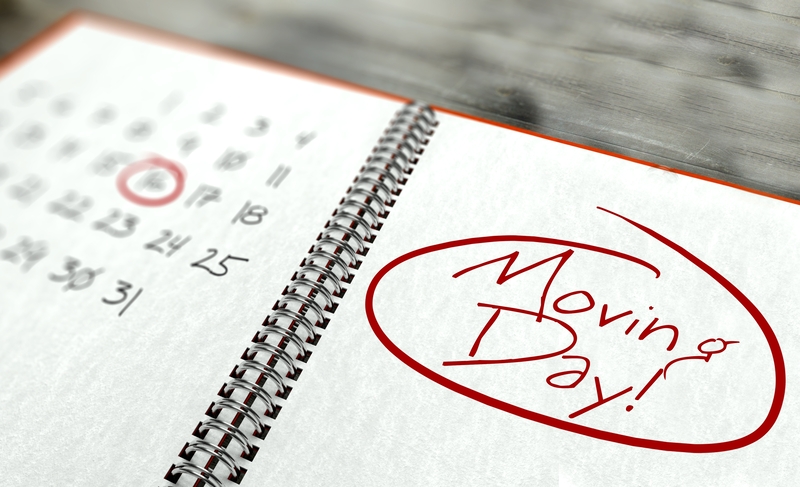How to Pack Efficiently for a Smooth Moving Experience
Posted on 25/06/2025
Moving to a new home can be an exciting adventure but often brings stress and chaos. One essential aspect that can make or break your moving journey is efficient packing. By mastering the art of organizing and packing, you'll not only save time but also minimize moving-day hassles, avoid breakage, and ensure a smoother transition. In this comprehensive guide, we'll walk you through how to pack efficiently for a smooth moving experience, offering professional tips, smart strategies, and step-by-step instructions to help you pack like a pro.
Why Packing Efficiently Matters
Packing efficiently doesn't just make moving day easier - it directly influences your entire relocation process. Here's why:
- Reduces moving time by making unpacking and loading simple.
- Minimizes damage to your belongings with organized, secure packing.
- Helps you stay organized and prevents misplacement of important items.
- Lowers moving costs if you're hiring movers, as efficient packing takes less time.

Packing Preparation: Laying the Foundation for a Smooth Move
Declutter Before You Pack
The first step to packing efficiently for your move is to declutter your space. Moving is the perfect opportunity to get rid of things you no longer use. Why waste time and energy packing belongings you don't need?
- Go room by room and sort items into four categories: keep, donate, sell, or discard.
- Hold a garage sale or post items online; donate gently used goods to local charities.
- Be ruthless--if you haven't used it in the past year, consider letting it go.
Create a Packing Timeline and Checklist
Efficient moving starts with planning. Create a detailed packing checklist and timeline at least a month before your move.
- Jot down all rooms and categories you need to pack.
- Assign packing dates for each area.
- Note special packing needs (fragile items, electronics, documents, etc.).
- Plan to pack non-essentials first and everyday items last.
Gather Quality Packing Supplies
Having the right moving supplies is essential for packing effectively and protecting your belongings.
- Boxes: Secure small, medium, and large sturdy cartons. Speciality boxes (wardrobe, dish barrels) can protect valuables.
- Packing Material: Bubble wrap, foam peanuts, packing paper, or even towels and blankets for cushioning.
- Tape: Heavy-duty packing tape and a tape dispenser for sealing boxes securely.
- Labels & Markers: For clear box labeling and color coding.
- Scissors, box cutters, ziplock bags for small parts.
Smart Strategies for Efficient Packing
Packing Room by Room
Focus on one room at a time when packing for a smooth moving experience. This keeps things organized and prevents chaos.
- Start with least-used rooms (attic, garage, basement, guest rooms).
- Label boxes by room and contents for easier unpacking.
- Finish with the kitchen, bathrooms, and bedrooms used daily.
Pack Similar Items Together
Group like items together--books with books, linens with linens. This method helps simplify unpacking and reduces the risk of damage.
Maximize Space, Minimize Waste
Pack boxes efficiently to utilize all available space:
- Fill gaps with soft items (clothes, towels) to prevent shifting.
- Place heavier items at the bottom, lighter items on top.
- Don't overpack boxes--keep them under 50 pounds for easy lifting.
- Disassemble furniture when possible and store hardware in labeled ziplock bags taped to the furniture.
Protect Fragile & Valuable Items
Fragile items need extra care:
- Use bubble wrap or packing paper generously.
- Wrap each item individually and fill empty spaces in boxes.
- Write "Fragile" on all sides of the box for careful handling.
- Pack valuables (jewelry, important documents) in a separate, personal bag for safekeeping.
- Consider moving precious items yourself.
Efficient Box Labeling: The Key to Stress-Free Unpacking
Proper box labeling is a game-changer for a smooth move. Here's how to do it right:
- Label every box on the side and top with the room and a brief description ("Kitchen - Pans and Utensils").
- Use a color-coded system--a different colored sticker or marker for each room.
- Assign numbers to boxes and keep a master inventory list for quick tracking.
- Add special notes like "Open First," "Fragile," or "This Side Up."
The Essential Packing Order: What to Pack and When
For seamless moving, it's important to follow a logical order when packing your belongings. Here's a suggested timeline:
- 4 Weeks Before Moving: Begin with items you use least, such as seasonal decor, off-season clothing, and books.
- 3 Weeks Before: Pack up knickknacks, artwork, rarely-used kitchenware, and collectibles.
- 2 Weeks Before: Start on bedding, linens, and infrequently used electronics.
- 1 Week Before: Pack most of your clothes, kitchen essentials, and bathroom items--leave only what you'll need each day.
- Moving Day: Take care of last-minute essentials such as toiletries, personal devices, daily medications, and vital documents. Place these in your "essentials bag."
Packing Hacks for an Even Smoother Move
- Use suitcases to transport heavy or hard-to-pack items (books, shoes, tools) with wheels for easy mobility.
- Leave dresser drawers full--simply remove and wrap the drawers in plastic wrap, keeping contents safe and saved space.
- Utilize towels and linens to wrap and cushion fragile items, reducing your need for extra packing materials.
- Keep cables, bolts, and small parts in zip bags labeled for reassembly at your new home.
- Take photos of the back of TVs or electronics before unplugging for easier setup.
- Cover toiletries and liquids with plastic wrap under the cap to prevent leaks.
How to Handle Specific Items: A Room-by-Room Guide
Kitchen Packing Tips
- Use dish barrels or double-box fragile dishware.
- Pack glassware upright, with each piece wrapped and divided.
- Bundle silverware and kitchen tools together in wrap or kitchen towels.
- Declutter the pantry and use up perishables ahead of time.
- Label sharp objects (knives, graters) and secure their blades for safety.
Bedroom Packing Tips
- Keep clothing on hangers and transfer directly into wardrobe boxes.
- Vacuum-seal off-season clothes or bedding to save space.
- Disassemble beds the night before moving day and keep all hardware in labeled bags.
Living Room Packing Tips
- Wrap electronics in anti-static bubble wrap. Pack with cords and remotes in the same box.
- Remove legs or covers from sofas and chairs if possible.
- Protect artwork and mirrors with corner protectors and by sandwiching between sturdy cardboard.
Bathroom Packing Tips
- Pack toiletries in leak-proof bags.
- Secure small items like jewelry or makeup in containers or zip bags.
- Keep medications and daily essentials separate for quick access.
Common Packing Mistakes to Avoid
- Procrastinating: Waiting until the last minute leads to rushed, careless packing and confusion.
- Overfilling boxes: Leads to damaged items and possible injury from lifting.
- Poor labeling: Makes unpacking difficult and disorganized.
- Ignoring essentials: Not setting aside daily necessities can create stress on the first night in your new home.
- Neglecting moving insurance: Overlooking the prospect of loss or damage can be costly. Check your mover's coverage policy.
Tips for a Smooth Moving Day
- Have a clear plan for loading the moving truck: large items and heavy boxes go in first, followed by lighter, fragile items.
- Keep your essentials kit (toiletries, snacks, basic tools, chargers, and important documents) with you.
- Direct movers to labeled boxes for room-by-room placement in your new home.
- Double-check your old home for overlooked items before leaving.

Unpacking: The Final Step to a Smooth Move
Packing efficiently for your move doesn't end at unpacking. Plan your first day at your new home:
- Start by setting up bedrooms and bathrooms for a comfortable first night.
- Unpack kitchen essentials next for easy meals and drinks.
- Use the color/number system on boxes to put everything in the right room before opening.
- Break down boxes as you go to prevent clutter.
Conclusion: Packing Efficiently for a Seamless Moving Experience
Mastering efficient moving and packing techniques can transform an overwhelming process into a manageable and even enjoyable experience. With careful planning, decluttering, smart packing, and proper labeling, you'll ensure a smooth and hassle-free move. Remember, the key to efficient packing is starting early, staying organized, and protecting your belongings. Put these packing tips to use, and enjoy your new home with minimal stress!
Whether you're moving across town or across the country, efficient packing paves the way for a fresh start. Happy moving!



